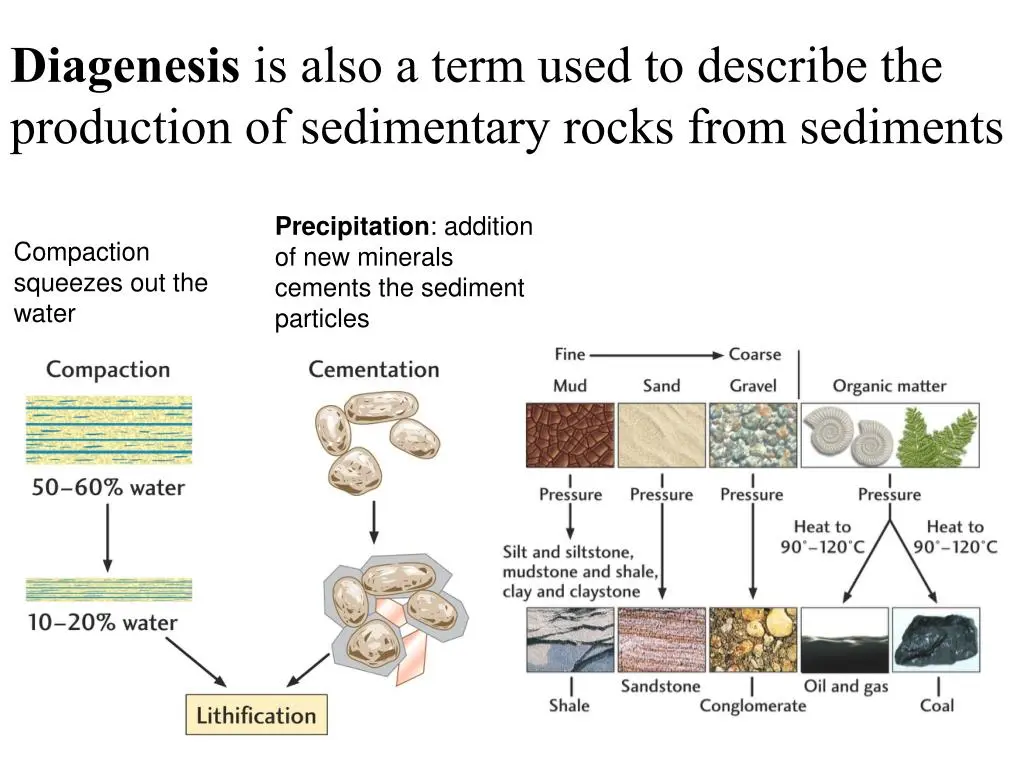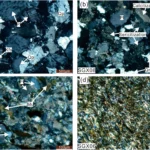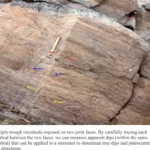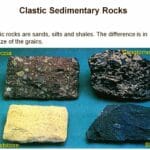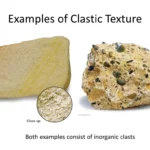Embark on an exciting adventure into the fascinating world of geology! We’re going to explore how ordinary sediments transform into amazing rocks. It’s like reading the story of Earth’s past, written right into the rocks. Get ready to dive into the science of diagenesis and lithification, where chemicals and forces work their magic on sediments, turning them into the rocks we see and use today. It’s like a CSI investigation of Earth’s geological archives, uncovering clues about ancient environments and revealing the amazing tale of our planet’s evolution.
Diagenesis and Lithification
Imagine a pile of sand or mud lying on the ground. What happens to it over time? Well, it doesn’t just stay there forever as loose sediment. It goes through an incredible transformation called diagenesis, and ultimately becomes solid rock through a process called lithification.
Diagenesis is like a makeover for sediment. It’s a series of changes that happen after the sediment has been deposited. It’s like taking a pile of mud and turning it into a beautiful piece of pottery. The sediment gets squished together, minerals move in and fill the spaces, and sometimes the minerals even change the whole makeup of the sediment.
Lithification is the final step in diagenesis, where the sediment finally becomes solid rock. It’s like when a caterpillar changes into a butterfly. The sediment gets stronger and more stable, and it becomes a permanent part of the Earth’s crust.
Here’s a table that summarizes the differences between diagenesis and lithification:
| Feature | Diagenesis | Lithification |
|---|---|---|
| Timeframe | Can take millions of years | Usually occurs over tens to hundreds of thousands of years |
| Result | Sediment becomes compacted and cemented | Sediment becomes solid rock |
| Significance | Alters the properties of the sediment | Creates a permanent part of the Earth’s crust |
Diagenesis and lithification are essential processes for the formation of many of the rocks we see around us. They can turn loose sediment into hard limestone, create beautiful crystals within rocks, and even form the foundations of the Earth’s crust. So next time you see a rock, take a moment to appreciate the amazing journey it has taken to get there.
Intrigued by the sedimentary rocks formed from broken fragments of other rocks? Delve into the captivating world of clastic sedimentary rocks!
Discover the fascinating processes behind weathering and erosion that shape these rocks. Explore how sediment transport mechanisms move these fragments and sedimentary facies and sequences provide insights into ancient environments.
Unravel the origins of clastic sediments through provenance analysis. Learn about their economic significance and clastic rock classification systems.
Delve into the intricacies of texture and composition of these intriguing rocks. Uncover the mysteries of clastic dikes and other fascinating soft-sediment deformation structures.
Finally, immerse yourself in the captivating field of paleocurrent indicators, which reveal the ancient currents that shaped these sedimentary wonders.
How are Diagenesis and Lithification Related?
Let’s dive into the fascinating world of sedimentary rock formation! Two key processes called diagenesis and lithification play a crucial role in transforming loose sediments into the solid rocks we encounter today.
Diagenesis: The Sculpting Artist
Think of diagenesis as a master sculptor working on a piece of clay. It’s the process where sediments undergo a series of physical, chemical, and biological changes after they’ve been laid down. These changes include:
- Compaction: Imagine squeezing a sponge filled with water. That’s what happens to sediments as the weight of overlying layers presses down, reducing their pore space.
- Cementation: This is like adding glue to the sediments. The minerals dissolved in groundwater can fill in the pores between sediment grains, binding them together.
- Mineral Replacement: Picture a magician switching one mineral for another. Certain minerals in sediments can dissolve and be replaced by different ones.
Lithification: The Final Touch
Lithification is the grand finale of diagenesis. It’s when sediments transform into solid rock. This happens when the pores in the sediments become completely filled with minerals. Imagine all the air bubbles in a sponge being replaced with solid material. The result is a solid, impermeable sedimentary rock.
How They’re Connected
Diagenesis sets the stage for lithification. By compacting and cementing sediments, diagenesis creates the conditions necessary for lithification to occur. Together, they work hand-in-hand to turn loose sediments into the building blocks of our Earth’s crust.
Fun Fact:
Did you know that some sedimentary rocks, like limestone, are formed through a process called biolithification? This occurs when the remains of organisms, such as shells or coral, accumulate and become cemented together. Isn’t nature amazing!
What are the Differences between Diagenesis and Lithification?
Imagine you’ve got a bunch of loose bits like sand or dirt all piled up. Over a really, really long time, they start to change because of stuff like pressure from other things on top, chemicals in the water, and even tiny living things. This is like a makeover for these loose bits, getting them ready to turn into solid rock. We call this makeover diagenesis.
After a while, the diagenesis process makes the loose bits squished together, like squeezing a sponge. This gets rid of the spaces between the bits. At the same time, minerals in the water act like glue, sticking the bits together. And to top it off, the bits can even reshape themselves into bigger, stronger pieces.
When diagenesis finishes, it’s time for lithification, the grand finale. This is when the changed-up sediment becomes so solid and stuck together that it’s basically now a proper rock. It’s like a birthday party for the new rock!
The Differences in a Nutshell:
- Timing: Diagenesis takes millions of years, while lithification happens over a shorter time.
- Result: Diagenesis makes loose bits denser and stronger, while lithification creates solid rocks.
- Importance: Diagenesis sets the stage, and lithification builds the foundation of our rocky Earth.
Putting it Together:
It’s like baking a cake. Diagenesis is like mixing the ingredients and baking it until it’s almost done. Lithification is like taking it out of the oven and letting it cool and set, creating a solid cake. Both steps are needed to make that delicious geological treat!
What are the Stages of Diagenesis and Lithification?
Buckle up, my curious readers, for a fascinating journey into the world of diagenesis and lithification, where sediments transform into solid, time-honored rocks.
Diagenesis: The Sedimentary Reshaping
Diagenesis is like a meticulous sculptor, molding and reshaping sediments through three key processes:
- Compacting the Pile: Imagine a pile of cushions; as each cushion gets added, the ones on the bottom get squished. Diagenesis mimics this compaction, squeezing out water and reducing porosity as more sediments pile up.
- Gluing It Together: Picture a bricklayer filling gaps between bricks with cement. Diagenesis employs minerals like calcite and quartz to act as the glue, bonding sediment particles into a cohesive mass.
- Mineral Makeover: Minerals in sediments undergo a chemical makeover, changing from existing forms into more stable ones. It’s like an alchemy of geology, where one mineral transforms into another, leaving its unique fingerprint in the rock.
Lithification: The Rock Star Genesis
Lithification is the crowning achievement of diagenesis, where sediments evolve into solid rock. Here’s the grand finale:
- Compaction and Cementation Unleashed: These processes go into overdrive, further solidifying the sediments into a tightly packed entity.
- Mineral Evolution: Minerals within the sediments grow stronger and reorganize, enhancing the rock’s endurance and stability. It’s a crystalline dance party, with minerals twirling and transforming into a unified whole.
Key Points to Remember:
- Diagenesis reshapes sediments through compaction, cementation, and mineral transformations, paving the way for lithification.
- Lithification marks the birth of rock, where sediments solidify and recrystallize, forming an enduring testament to time’s passage.
- Understanding these processes provides a glimpse into the geological history, offering insights into rock formation and the transformative power of our planet.
FAQ
Q1: What is the difference between diagenesis and lithification?
A1: Diagenesis refers to all physical, chemical, and biological changes that occur in sediments after deposition, except for weathering or surface alterations. Lithification is a specific type of diagenesis that involves the conversion of loose sediments into solid rock.
Q2: What are the different processes involved in diagenesis?
A2: Diagenesis can involve a variety of processes, including compaction, cementation, recrystallization, replacement, and dissolution. These processes can alter the physical, chemical, and biological properties of sediments.
Q3: What factors affect diagenesis?
A3: The rate and extent of diagenesis can be influenced by a number of factors, including the composition of the sediments, the temperature and pressure conditions, the presence of fluids and gases, and the duration of burial.
Q4: How can we study diagenesis?
A4: Diagenesis can be studied through the analysis of sedimentary rocks, which can provide evidence of the physical, chemical, and biological changes that have occurred. Techniques such as microscopy, X-ray diffraction, and geochemical analysis can be used to identify and characterize diagenetic features.
Q5: Why is diagenesis important?
A5: Diagenesis plays a crucial role in the formation and evolution of sedimentary rocks. It can alter the physical and chemical properties of sediments, making them more resistant to erosion and weathering. Diagenesis can also lead to the formation of valuable mineral deposits, such as oil and gas reservoirs.
- Red Cross Flag: Protecting Humanity Through History - April 19, 2025
- China II Review: Delicious Food & Speedy Service - April 17, 2025
- Understand Virginia’s Flag: History & Debate - April 17, 2025
